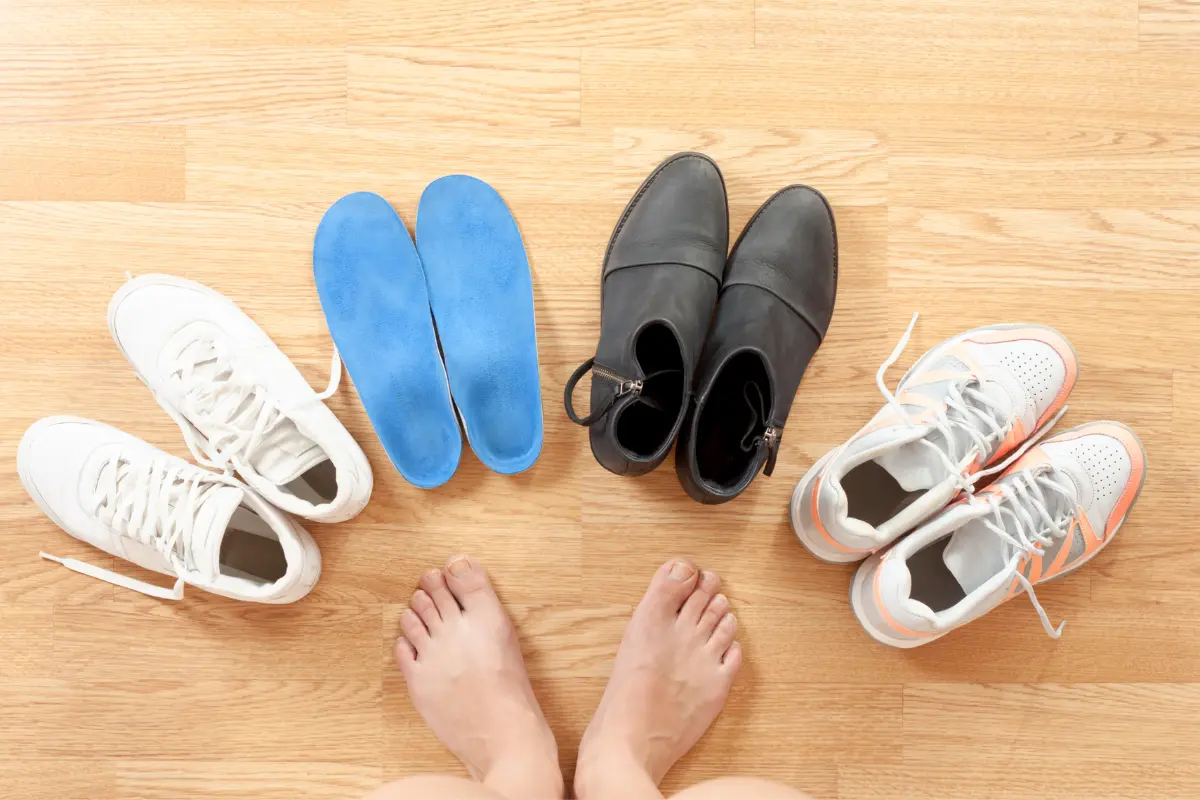Bunions can be a real pain, quite literally. These pesky bony bumps can turn every step into a struggle, making your daily routine and favorite activities feel like a chore. But don’t worry—choosing the right shoes can make a world of difference. With a wide toe box, flexible upper, and well-cushioned midsole, the best shoes for bunions can help you stride comfortably and confidently. Let’s dive into what you need to know to find the perfect pair!
What Are Bunions?
Bunions are bony bumps that form on the joint at the base of your big toe. They occur when your big toe pushes against your next toe, forcing the joint of your big toe to grow and stick out. The skin over the bunion might be red and sore. Over time, the bunion can cause severe pain and lead to other foot problems.
Causes of Bunions
Bunions can develop due to several factors, including:
- Genetics: A family history of bunions can increase your risk.
- Footwear: Wearing tight, narrow shoes can cause bunions or worsen them.
- Foot Stress: Foot injuries or stress can lead to bunions.
- Arthritis: Certain types of arthritis can cause bunions.
Symptoms of Bunions
Common symptoms include:
- Visible Bump: A noticeable bump on the outside of your big toe.
- Swelling and Redness: Inflammation around the big toe joint.
- Pain: Persistent or intermittent pain in the affected area.
- Restricted Movement: Limited movement of your big toe.
Choosing the Best Shoes for Bunions
Key Features to Look For
When shopping for shoes to accommodate bunions, look for these essential features:
- Wide Toe Box: Provides ample space for your toes to move freely and reduces pressure on the bunion.
- Flexible Upper: Allows the shoe to stretch and conform to the shape of your foot, providing comfort and reducing irritation.
- Cushioned Midsole: Offers support and shock absorption, which can help alleviate pain and discomfort.
Top Shoe Recommendations
1. New Balance 990v5
The New Balance 990v5 is a popular choice for those with bunions due to its wide toe box and excellent cushioning. The shoe’s mesh upper provides flexibility and breathability, ensuring your feet stay comfortable all day long.
2. Brooks Ghost 13
Brooks Ghost 13 offers a great blend of support and cushioning. Its spacious toe box and soft, flexible upper make it a top pick for bunion sufferers. The shoe’s midsole provides ample cushioning, reducing impact on your joints.
3. ASICS Gel-Kayano 27
ASICS Gel-Kayano 27 is known for its stability and support. The shoe features a wide toe box and a cushioned midsole that helps distribute pressure evenly, making it a great option for those with bunions.
Finding the Right Fit
Proper fit is crucial when it comes to managing bunions. Here are some tips to ensure you find the right fit:
- Measure Your Feet: Have your feet measured professionally to ensure you’re wearing the correct size.
- Try Shoes on Later in the Day: Your feet tend to swell throughout the day, so try shoes on in the afternoon or evening to get the most accurate fit.
- Wear Appropriate Socks: Wear the type of socks you plan to use with the shoes when trying them on.
Additional Tips for Managing Bunions
Foot Exercises
Regular foot exercises can help strengthen the muscles around your bunion and improve flexibility. Some effective exercises include:
- Toe Stretches: Stretch your toes by gently pulling them apart and holding for a few seconds.
- Towel Scrunches: Place a towel on the floor and use your toes to scrunch it up.
- Ball Roll: Roll a small ball under your foot to massage the arch and relieve tension.
Padding and Orthotics
Using padding and orthotics can provide additional support and cushioning, helping to alleviate bunion pain. Look for:
- Bunion Pads: Gel or foam pads that can be placed over the bunion to reduce friction and pressure.
- Custom Orthotics: Specially designed shoe inserts that provide support and alignment for your feet.
Avoiding High Heels
High heels can exacerbate bunions by putting extra pressure on the front of your feet. Opt for shoes with lower heels and a wider toe box to minimize discomfort.
Surgery as a Last Resort
In severe cases, surgery may be necessary to correct a bunion. However, this should be considered a last resort after exploring other treatment options. If you’re experiencing significant pain or mobility issues, consult with a healthcare professional to discuss your options.
Conclusion
Finding the best shoes for bunions can significantly improve your comfort and quality of life. By choosing shoes with a wide toe box, flexible upper, and cushioned midsole, you can reduce pain and prevent your bunion from worsening. Remember to prioritize proper fit and consider additional support options like padding and orthotics. With the right footwear and care, you can step into comfort and enjoy your daily activities without bunion pain.







